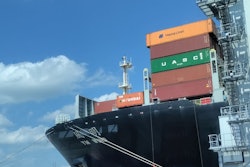
Sourcing diversification has been a topic of discussion for years. Still, it wasn't until the impacts of the pandemic, trade wars, economic instabilities and geopolitical schisms dispersing global supply chains that executives started seriously analyzing their procurement, production and distribution practices. These disruptive events exposed the vulnerabilities of global supply chains and highlighted the need for major changes to build resilience against future challenges.
A recent Ocean Shipping Index report draws attention to this topic, providing valuable insights into the potential shift to South America as a supplier base for specific industries. This data analyzes ocean shipment transaction data for imports and exports moving through ports in South America as a tool to evaluate potential logistics speed, capturing time from initial booking to the receipt at the destination. This sets benchmarks for firms to reference in order to plan properly.
But logistics capabilities and infrastructure aren’t the only factors that need to be considered.
Prevailing winds - Trends and patterns
Supply chains began stretching globally around the turn of the 19th Century and have been ever-present and yet largely invisible to average citizens over the last few decades, until the U.S.-China trade wars in 2023. The COVID-19 pandemic in 2020 caused the sharpest-ever coordinated drop in global demand, followed by an unexpectedly rapid recovery in some, but not all, categories of products and services. These last two years of extraordinary demand and supply fluctuations have demonstrated that businesses are in a new phase of globalization and organizations can’t just go back to the supply chains of 2019. Companies are exploring near-shoring options, aiming to strengthen connections and establish buffers against potential disruptions in the chain. Moreover, there is a strategic shift away from China as a preemptive measure for risk mitigation. These trends are primarily driven by concerns over supply shortages, the fluctuating dynamics of supply and demand and the implementation of diversified strategies. As companies adapt to these changing circumstances, they are rethinking their sourcing strategies and seeking alternative solutions to ensure the resilience and efficiency of their supply chains.
Heads winds - Challenges in deglobalization
While nearshoring, friendshoring and deglobalization present promising opportunities for businesses, they also bring forth a unique set of challenges, particularly in the context of China. As companies venture into the realm of nearshoring, aiming to establish closer proximity and strengthen connections, they must grapple with logistical complexities and potential disruptions that arise from navigating new supply chain networks. Friendshoring, which involves seeking supplier partnerships based on shared values and trust, requires careful vetting and due diligence to ensure alignment and reliability, especially considering concerns surrounding compliance and trade practices often associated with China.
Additionally, the process of deglobalization, driven by risk mitigation strategies, entails the need to identify and establish alternative sourcing options, reducing the traditional reliance on China due to geopolitical uncertainties and concerns over supply chain vulnerabilities. This shift necessitates overcoming potential barriers such as language barriers, regulatory differences and cultural nuances that are particularly pronounced when diversifying away from China. As these sourcing strategies evolve, companies face the critical task of effectively managing and mitigating the challenges that arise, including those specifically tied to China, to unlock the full potential of these emerging paradigms. By strategically addressing these hurdles, businesses can foster resilient and efficient supply chains that withstand the test of uncertainties in today's global landscape while redefining their relationship with China.
Tailwinds - Opportunities in South America
Shifting trade winds, exploring nearshoring and deglobalization strategies, and engaging with suppliers closer to home, such as South America, present enticing business opportunities. The emergence of South America as a prominent supplier base brings forth advantages such as improved supply chain resilience, reduced lead times and enhanced flexibility in meeting evolving customer demands.
This deliberate shift towards regionalization allows companies to reduce reliance on traditional manufacturing powerhouses like China, mitigating geopolitical risks and trade tensions. By partnering with South American suppliers, businesses navigate complex regulations and cultural nuances while ensuring compliance and ethical practices. South America's diverse industries, rich in raw materials and agricultural products, offer unique opportunities for mining, energy and advanced manufacturing sectors.
Arriving at your destination
Collaborating with South American suppliers allows businesses to embrace the building synergy of nearshoring and deglobalization strategically. Businesses can unlock the immense potential of South America as a sourcing and investment hub. However, it is important to acknowledge and address the complexities and intricacies inherent in navigating these opportunities. Companies must understand local market dynamics and build strong partnerships based on trust and mutual benefit. Effective management of cross-cultural communication, supply chain integration and regulatory compliance will be critical to fully capitalize on the promising prospects that South America offers.
Exploring nearshoring and deglobalization strategies in the context of South America presents a wealth of enticing business opportunities. From improved supply chain resilience to accessing untapped markets and capitalizing on abundant resources, the region's advantages are abundant. With South America knocking on the door as a new supplier, businesses have the opportunity to diversify their sourcing and strengthen their supply chains, setting themselves on a path toward long-term success in an ever-changing world.




















